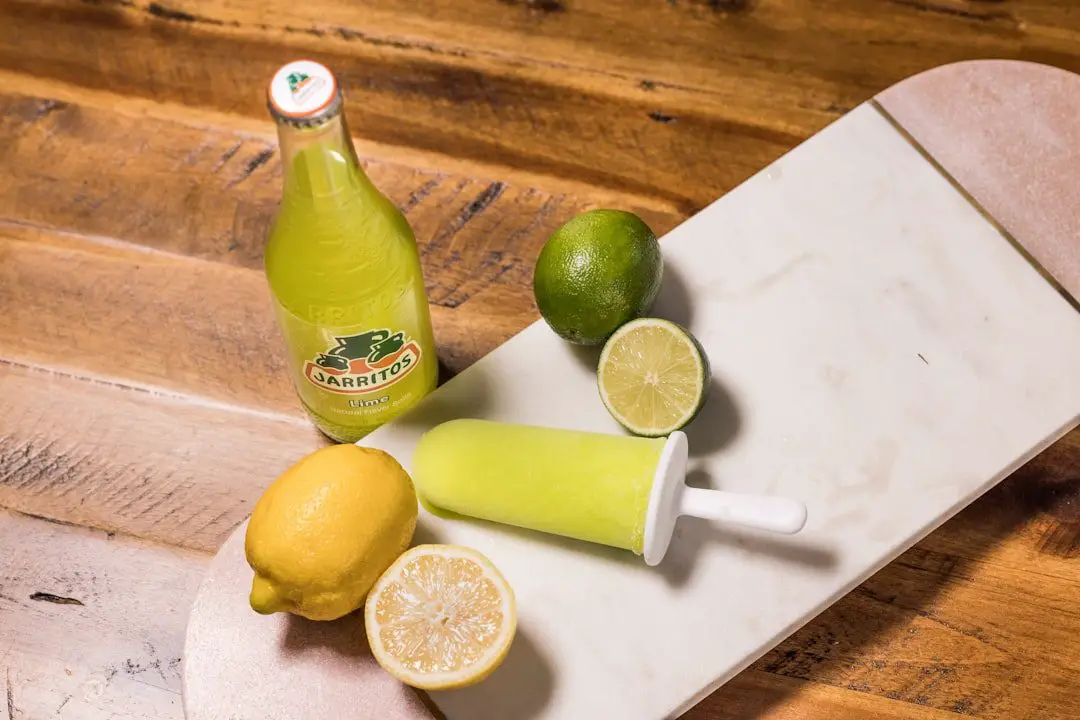
Anise is a versatile and aromatic spice that is known for its licorice-like flavor. It is commonly used in both sweet and savory dishes, as well as in beverages and cocktails. In this article, we will explore the history of anise, its health benefits, and its various culinary uses. Whether you are a seasoned chef or a beginner in the kitchen, there is something for everyone to learn about this unique spice.
Key Takeaways
- Anise is a licorice-like spice that has been used in culinary and medicinal practices for centuries.
- Anise has a rich history and is commonly used in baked goods, beverages, savory dishes, desserts, and cocktails.
- Anise has several health benefits, including aiding digestion and reducing inflammation.
- Anise can be used in a variety of dishes, from Mediterranean to Asian cuisine, and can be cooked with tips and tricks for beginners.
- Other spices with similar flavors to anise include fennel, star anise, and licorice root.
The History of Anise and Its Culinary Uses
Anise has a long history that dates back to ancient times. It is believed to have originated in the Mediterranean region and was used by the ancient Egyptians, Greeks, and Romans for both culinary and medicinal purposes. In fact, anise was so highly regarded in ancient Rome that it was often used as a currency.
Throughout history, anise has been used in a variety of culinary dishes. It is commonly used in baking, particularly in traditional Italian biscotti and pizzelle cookies. Anise is also a key ingredient in many liqueurs, such as sambuca and ouzo. In addition to its culinary uses, anise has also been used medicinally to aid digestion and reduce inflammation.
The Health Benefits of Anise in Your Diet
In addition to its delicious flavor, anise also offers several health benefits. It is low in calories and fat, making it a great addition to a healthy diet. Anise is also rich in vitamins and minerals, including iron, calcium, and magnesium.
One of the key health benefits of anise is its ability to aid digestion. It has been used for centuries to relieve symptoms of indigestion, bloating, and gas. Anise contains compounds that help relax the muscles of the digestive tract, allowing food to move more easily through the system.
Anise also has anti-inflammatory properties, which can help reduce inflammation in the body. This can be particularly beneficial for those with conditions such as arthritis or inflammatory bowel disease. Additionally, anise has been shown to have antimicrobial properties, which can help fight off harmful bacteria and viruses.
To incorporate anise into your diet for maximum health benefits, try adding it to your favorite recipes. You can use ground anise seeds in baked goods, or add whole seeds to soups, stews, and marinades. Anise can also be brewed into a tea or infused into a beverage for a refreshing and healthful drink.
Anise in Baked Goods: From Biscotti to Pizzelle
| Baked Good | Anise Quantity | Baking Time | Temperature |
|---|---|---|---|
| Biscotti | 1 tsp | 20-25 min | 350°F |
| Pizzelle | 2 tsp | 30-45 sec | 375°F |
| Anise Cookies | 1 tbsp | 10-12 min | 375°F |
| Anise Bread | 2 tbsp | 45-50 min | 350°F |
Anise is a popular flavor in many classic baked goods. It adds a unique and aromatic taste that pairs well with both sweet and savory ingredients. Some of the most well-known anise-flavored baked goods include Italian biscotti and pizzelle cookies.
Biscotti are traditional Italian cookies that are twice-baked, resulting in a crunchy texture. They are often flavored with anise and almonds, and are typically enjoyed with a cup of coffee or tea. Pizzelle cookies are another Italian favorite that are made using a special iron press. These thin, crispy cookies are often flavored with anise and can be enjoyed on their own or filled with sweet fillings such as Nutella or jam.
While these classic recipes are delicious on their own, there are also many variations and adaptations of anise in baked goods. For example, you can add anise to your favorite muffin or cake recipe for a unique twist. You can also experiment with different spices and flavors to create your own signature anise-flavored baked goods.
When baking with anise, it is important to use the right amount to achieve the desired flavor. Anise has a strong taste, so a little goes a long way. Start with a small amount and adjust to taste. You can use either ground anise seeds or whole seeds, depending on your preference. If using whole seeds, you can crush them slightly to release more flavor.
Anise in Beverages: From Sambuca to Chai Tea
Anise is a popular flavor in many beverages around the world. It adds a distinct and refreshing taste that can be enjoyed on its own or mixed with other ingredients. Some of the most well-known anise-flavored beverages include sambuca, ouzo, and absinthe.
Sambuca is an Italian liqueur that is flavored with anise and often enjoyed as a digestif. It is typically served neat or with a few coffee beans floating on top. Ouzo is a Greek liqueur that is similar to sambuca, but with a slightly different flavor profile. It is often enjoyed as an aperitif or mixed with water to create a refreshing drink.
In addition to these classic liqueurs, there are also many unique and creative ways to use anise in beverages. For example, you can add anise to your favorite tea blend for a hint of licorice flavor. Chai tea, in particular, pairs well with anise and other warm spices such as cinnamon and cardamom.
To make anise-infused beverages at home, you can start by making a simple syrup using anise seeds and sugar. This syrup can be added to cocktails, lemonade, or even sparkling water for a refreshing and flavorful drink. You can also infuse anise seeds in vodka or another spirit to create your own homemade liqueur.
Anise in Savory Dishes: From Mediterranean to Asian Cuisine

Anise is not only used in sweet dishes, but also in savory dishes from around the world. It adds a unique and aromatic flavor that pairs well with a variety of ingredients. Some of the most well-known savory dishes that feature anise include Mediterranean dishes such as Greek moussaka and Italian sausage.
In Mediterranean cuisine, anise is often used to flavor meats and stews. It adds a depth of flavor that complements the richness of the dish. Anise is also commonly used in Asian cuisine, particularly in Chinese and Vietnamese dishes. It is often used in marinades for meats and in stir-fries.
When cooking with anise in savory dishes, it is important to balance the flavors. Anise has a strong taste, so a little goes a long way. You can use either ground anise seeds or whole seeds, depending on your preference. If using whole seeds, you can crush them slightly to release more flavor.
Anise in Desserts: From French Macarons to Indian Halwa
Anise is a versatile spice that can be used in a wide variety of desserts from around the world. It adds a unique and aromatic flavor that pairs well with both sweet and savory ingredients. Some of the most well-known anise-flavored desserts include French macarons and Indian halwa.
French macarons are delicate almond meringue cookies that are sandwiched together with a filling. They are often flavored with anise and other warm spices such as cinnamon or cardamom. Indian halwa is a sweet dessert made from semolina or other grains, flavored with anise and other spices such as saffron or rose water.
In addition to these classic recipes, there are also many creative ways to use anise in desserts. For example, you can add anise to your favorite cake or cookie recipe for a unique twist. You can also infuse cream or milk with anise to create a flavorful base for ice cream or custard.
When using anise in desserts, it is important to use the right amount to achieve the desired flavor. Anise has a strong taste, so a little goes a long way. Start with a small amount and adjust to taste. You can use either ground anise seeds or whole seeds, depending on your preference. If using whole seeds, you can crush them slightly to release more flavor.
Anise in Cocktails: From Classic to Modern Mixology
Anise is a popular flavor in many classic cocktails, as well as in modern mixology. It adds a distinct and refreshing taste that pairs well with a variety of spirits and other ingredients. Some of the most well-known anise-flavored cocktails include the classic Sazerac and the modern Black Licorice Martini.
The Sazerac is a classic cocktail that originated in New Orleans and is often considered one of the oldest known cocktails. It is made with rye whiskey, absinthe or Herbsaint, sugar, and Peychaud’s bitters. The absinthe or Herbsaint adds a distinct anise flavor to the drink.
In addition to classic cocktails, there are also many modern twists on anise cocktails. For example, you can add anise to your favorite gin or vodka cocktail for a unique and refreshing twist. You can also experiment with different flavors and ingredients to create your own signature anise cocktail.
To make anise cocktails at home, you can start by infusing spirits such as vodka or gin with anise seeds. This will give the drink a subtle anise flavor without overpowering the other ingredients. You can also make a simple syrup using anise seeds and sugar, which can be added to cocktails for a hint of licorice flavor.
How to Cook with Anise: Tips and Tricks for Beginners
Cooking with anise can be intimidating for beginners, but with a few tips and tricks, you can easily incorporate this versatile spice into your dishes. Here are some basic tips for cooking with anise:
– Start with a small amount: Anise has a strong flavor, so a little goes a long way. Start with a small amount and adjust to taste.
– Use ground or whole seeds: Anise can be used in both ground and whole seed form. Ground anise seeds are easier to incorporate into dishes, while whole seeds can be crushed slightly to release more flavor.
– Pair anise with complementary flavors: Anise pairs well with a variety of flavors, including cinnamon, cardamom, and citrus. Experiment with different combinations to find your favorite.
– Be mindful of cooking time: Anise can lose its flavor if cooked for too long. Add it towards the end of cooking to preserve its aromatic qualities.
– Store anise properly: Anise should be stored in an airtight container in a cool, dark place to preserve its flavor. Ground anise seeds will last for about six months, while whole seeds can last for up to a year.
While cooking with anise, there are also some common mistakes to avoid. One of the most common mistakes is using too much anise, which can overpower the other flavors in the dish. Start with a small amount and adjust to taste. Another mistake is cooking anise for too long, which can cause it to lose its flavor. Add it towards the end of cooking to preserve its aromatic qualities.
For those looking to get the most out of anise in their cooking, here are some expert tips:
– Toast anise seeds before using them: Toasting anise seeds can help release their natural oils and enhance their flavor. Simply heat a dry skillet over medium heat and add the seeds. Toast them for a few minutes until fragrant, then remove from heat and let cool before using.
– Grind your own anise powder: For the freshest flavor, consider grinding your own anise powder using a spice grinder or mortar and pestle. This will ensure that you are getting the most flavor out of the seeds.
– Experiment with different cuisines: Anise is used in a variety of cuisines around the world, so don’t be afraid to experiment with different recipes and flavors. Try adding anise to dishes from Mediterranean, Asian, or Middle Eastern cuisines for a unique twist.
Anise Alternatives: Other Spices with Similar Flavors to Try
If you don’t have anise on hand or simply want to try something different, there are several spices that have a similar flavor profile. Some of the most common anise alternatives include fennel seeds, star anise, and caraway seeds.
Fennel seeds have a similar licorice-like flavor to anise and can be used as a substitute in many recipes. They are often used in Italian and Mediterranean cuisine, particularly in sausages and roasted meats. Fennel seeds can be used whole or ground, depending on the recipe.
Star anise is another spice that has a similar flavor to anise. It is often used in Chinese and Vietnamese cuisine, particularly in soups and braised dishes. Star anise has a stronger flavor than anise, so it should be used sparingly.
Caraway seeds are another spice that has a similar flavor to anise. They are often used in European cuisine, particularly in breads and sauerkraut. Caraway seeds have a slightly nutty flavor that pairs well with both sweet and savory dishes.
When using these spices as a substitute for anise, it is important to adjust the amount to achieve the desired flavor. Start with a small amount and adjust to taste. You can also experiment with different combinations of spices to create your own unique flavor profile.
In conclusion, anise is a versatile and aromatic spice that adds a unique and refreshing flavor to a variety of dishes. Whether you are baking, cooking, or mixing cocktails, anise can be used in a variety of creative and delicious ways. From classic recipes to modern twists, there is something for everyone to enjoy when cooking with anise. So why not give it a try and explore the complex and delightful flavors of this versatile spice?
If you’re a fan of the unique and aromatic flavor of anise, you’ll love this article on Flavorful Sips that explores the art of baking brie with fruit preserves. Indulge in the perfect combination of creamy brie cheese and the sweet tanginess of fruit preserves, all enhanced by a hint of anise. Discover how to create a masterful baked brie dish that will impress your guests and tantalize your taste buds. Check out the article here for step-by-step instructions and tips to elevate your appetizer game.



